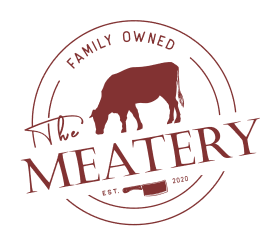Kobe beef represents the pinnacle of luxury meat, originating from a specific bloodline of Japanese Black cattle (Tajima-gyu) raised in Hyogo Prefecture, Japan. This prestigious beef isn't just a premium cut of meat; it's a carefully cultivated product with a heritage spanning centuries.
The cattle used for Kobe beef are descendants of the native Asian cattle, specifically bred and raised under strict regulations in the Hyogo Prefecture. These cattle experience a unique upbringing that includes a specialized diet of high-quality feed, fresh water, and, contrary to popular myths, they don't actually receive regular massages or beer.
What truly sets Kobe beef apart is its exceptional marbling, known as "shimofuri" in Japanese. This intricate network of intramuscular fat creates a distinctive pattern that resembles snowflakes, contributing to the meat's legendary tenderness and rich, buttery flavor. The fat in Kobe beef has a lower melting point than that of regular beef, typically around 77°F (25°C), allowing it to literally melt in your mouth.
To be classified as authentic Kobe beef, the cattle must meet specific criteria:
- Born and raised in Hyogo Prefecture
- Tajima-gyu bloodline
- Fed a specialized diet
- Processed in approved facilities within Hyogo Prefecture
- Meet strict marbling standards
What is the Cultural And Historical Context
The history of Kobe beef is deeply intertwined with Japanese culture and agricultural traditions. Before the 1800s, cattle in Japan were primarily used as draft animals for agriculture, not for meat consumption. This changed during the Meiji period (1868-1912) when Japan opened its borders to Western influences.
The region of Hyogo, particularly around Kobe city, became renowned for its superior cattle breeding practices. Local farmers developed specialized techniques to raise cattle that would produce exceptionally tender and flavorful meat. These methods were passed down through generations, becoming an integral part of the region's cultural heritage.
"Kobe beef represents not just a luxury food item, but a testament to Japanese dedication to perfection and attention to detail in food production."
The cultural significance of Kobe beef extends beyond its culinary value. It symbolizes Japan's meticulous approach to food production, where quality takes precedence over quantity. The careful breeding, raising, and processing of these cattle reflect Japanese values of patience, precision, and respect for tradition.
Kobe Beef Vs Wagyu Beef
One of the most common misconceptions in the culinary world is that Kobe beef and Wagyu beef are interchangeable terms. While all Kobe beef is Wagyu, not all Wagyu is Kobe beef. Here's a detailed comparison:
Wagyu Beef:
- Refers to all Japanese beef cattle breeds
- Can be raised anywhere in the world
- Includes four main breeds: Japanese Black, Japanese Brown, Japanese Shorthorn, and Japanese Polled
- Quality and characteristics can vary significantly
Kobe Beef:
- Must come from Tajima-gyu lineage of Japanese Black cattle
- Can only be raised in Hyogo Prefecture
- Must meet strict quality standards
- Requires official certification
Kobe Beef Grading System
The grading system for Kobe beef is extraordinarily precise and considers multiple factors. The Japanese Meat Grading Association (JMGA) evaluates each carcass based on:
Yield Grade:
- A: Above average yield
- B: Average yield
- C: Below average yield
Quality Grade Factors:
- Marbling Score (BMS): 1-12
- Meat Color and Brightness: 1-7
- Firmness and Texture: 1-5
- Fat Color, Luster, and Quality: 1-5
To qualify as Kobe beef, the meat must achieve:
- BMS of 6 or higher
- Yield score of A or B
- Overall quality score of 4 or higher
Kobe Beef Certification
The certification process for Kobe beef is rigorous and controlled by the Kobe Beef Marketing & Distribution Promotion Association. Each certified Kobe beef carcass receives:
- A unique 10-digit identification number
- The official Kobe beef crescent moon stamp
- Documentation verifying its authenticity
To maintain certification integrity, strict tracking systems are in place:
- DNA testing to verify bloodline
- Birth-to-harvest documentation
- Processing facility certification
- Distribution channel verification
Recipes And Serving Ideas
When preparing Kobe beef, simplicity is key to showcase its exceptional flavor and texture. Here are recommended preparation methods:
Traditional Preparations:
- Teppanyaki style grilling
- Shabu-shabu (hot pot)
- Sukiyaki
- Simple steak preparation
Cooking Tips:
- Serve in small portions (3-4 ounces) due to richness
- Cook to medium-rare at most
- Allow meat to come to room temperature before cooking
- Use minimal seasoning - salt and pepper are sufficient
- Rest meat for 5-10 minutes after cooking
The key to serving Kobe beef is to respect its natural flavors and avoid overwhelming them with complex sauces or seasonings. Simple accompaniments like wasabi, soy sauce, or sea salt are traditional and complementary. Check out The Meatery to try the best beef in the world at home!









